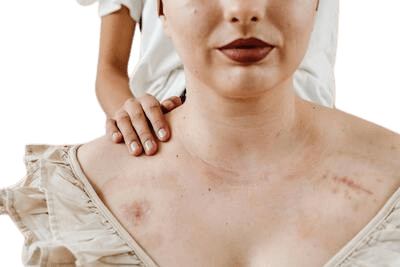
At Dr. James Dsilva' Clinic, we provide a range of scar removal techniques that produce observably better cosmetic results. The way these cosmetic procedures treat scars and the kinds of scars they treat differ. A combined strategy involving several treatment techniques is frequently necessary for scars. This works for scars that are complicated and have special qualities that are impossible to treat with conventional unidimensional techniques.
Anaesthesia will be administered; however, it may be topical or injectable, contingent on the necessary course of treatment. Topical anaesthesia is most frequently used for superficial or non-invasive procedures, however local or even general anaesthesia may be utilised for surgical scar revision.
Dr. James Dsilva will go over your medical history, take into account any particulars of the nature and location of your scar, and create a personalised treatment plan during your appointment for scar revision.
Types of Scars treated at Dr. James Dsilva’ Scar Treatment Clinic
- Acne Scars
- Hypertrophic Scars
- Keloid Scars
- Atrophic Scars
- Chickenpox Scars
- Post-Surgery Scars
What is Subcision
Subcision is a minimally invasive procedure that can be effective for treating certain types of scars, particularly atrophic scars (scars that are depressed below the skin's surface).
Types of Scars that Respond Well to Subcision
Atrophic acne scars: Subcision is particularly effective for treating ice pick scars (deep, narrow scars) and boxcar scars (wide, box-shaped scars).
Other atrophic scars: Subcision may also be helpful for other types of atrophic scars, such as those caused by chickenpox or other injuries.
Benefits of using Subcision for Scar Removal
Releasing Tethered Scars: Atrophic scars often form because the scar tissue becomes tethered to the underlying tissues, pulling the skin down and creating a depression. Subcision works by releasing these tethers. A thin needle is inserted under the scar and used to gently separate the scar tissue from the underlying tissues.
Stimulating Collagen Production: The process of subcision also triggers the body's natural healing response, which stimulates the production of collagen. The new collagen helps to fill in the depressed areas of the scar, making it less noticeable.
Important Considerations
Not suitable for all scars: Subcision is not effective for raised scars (hypertrophic scars or keloids).
Potential side effects: Subcision can cause side effects such as bruising, swelling, and discomfort. There is also a small risk of infection.
Multiple sessions may be needed: It may take multiple sessions of subcision to achieve the desired results.
Results may not be permanent: The results of subcision are not permanent, and the scars may gradually return over time.
Additional Information
- Subcision is often combined with other scar revision treatments, such as microneedling, laser therapy, or dermal fillers, to achieve optimal results. The recovery time for subcision is typically minimal, and most people can return to their normal activities within a few days.
- Subcision is a relatively new procedure, and more research is needed to fully understand its long-term effects.